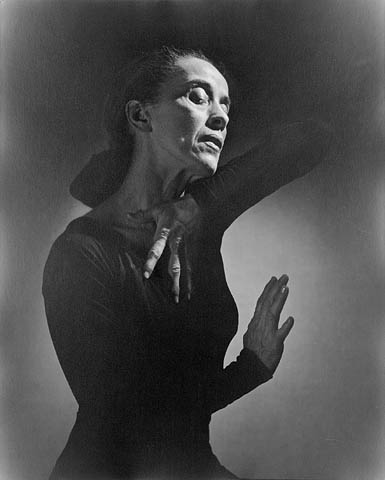|
Tamir Ginz
Tamir Ginz is an Israeli performer of modern dance, choreographer and dance teacher. Biography Tamir Ginz started to dance at the age of 13 with his sister Tali Hershkowitz as a teacher in a dance studio in Kiryat Motzkin. Ginz studied dance in Kibbutzim College of Education and London Contemporary Dance School. He received BA in English Linguistics and Literature and Sociology in Haifa University. Tamir Ginz started to perform with the Haifa Ballet. He continued to dance in the Batsheva Dance Company in 1991-1992 at the time when Ohad Naharin became a company's director. Ginz started choreography career with Bat-Dor Dance Company in Tel Aviv. He created programme 'Platform 1' for Bat-Dor, winning the Danish 1997 Albert Gaubier award for choreography for it. Ginz left Bat-Dor in 2002 and established Kamea Dance Company together with Daniella Shapira. He was appointed Artistic Director of the Company as well as main choreographer. In addition to choreography, Ginz danced ... [...More Info...] [...Related Items...] OR: [Wikipedia] [Google] [Baidu] |
Modern Dance
Modern dance is a broad genre of western concert or theatrical dance which included dance styles such as ballet, folk, ethnic, religious, and social dancing; and primarily arose out of Europe and the United States in the late 19th and early 20th centuries. It was considered to have been developed as a rejection of, or rebellion against, classical ballet, and also a way to express social concerns like socioeconomic and cultural factors. In the late 19th century, modern dance artists such as Isadora Duncan, Maud Allan, and Loie Fuller were pioneering new forms and practices in what is now called aesthetic or free dance. These dancers disregarded ballet's strict movement vocabulary (the particular, limited set of movements that were considered proper to ballet) and stopped wearing corsets and pointe shoes in the search for greater freedom of movement. Throughout the 20th century, sociopolitical concerns, major historical events, and the development of other art forms contributed to ... [...More Info...] [...Related Items...] OR: [Wikipedia] [Google] [Baidu] |
Carmina Burana (Orff)
' is a cantata composed in 1935 and 1936 by Carl Orff, based on 24 poems from the medieval collection '' Carmina Burana''. Its full Latin title is ' ("Songs of Beuern: Secular songs for singers and choruses to be sung together with instruments and magical images"). It was first performed by the Oper Frankfurt on 8 June 1937. It is part of '' Trionfi'', a musical triptych that also includes ''Catulli Carmina'' and ''Trionfo di Afrodite''. The first and last sections of the piece are called "" ("Fortune, Empress of the World") and start with "O Fortuna". Text In 1934, Orff encountered the 1847 edition of the '' Carmina Burana'' by Johann Andreas Schmeller, the original text dating mostly from the 11th or 12th century, including some from the 13th century. was a young law student and an enthusiast of Latin and Greek; he assisted Orff in the selection and organization of 24 of these poems into a libretto mostly in secular Latin verse, with a small amount of Middle High German a ... [...More Info...] [...Related Items...] OR: [Wikipedia] [Google] [Baidu] |
Living People
Related categories * :Year of birth missing (living people) / :Year of birth unknown * :Date of birth missing (living people) / :Date of birth unknown * :Place of birth missing (living people) / :Place of birth unknown * :Year of death missing / :Year of death unknown * :Date of death missing / :Date of death unknown * :Place of death missing / :Place of death unknown * :Missing middle or first names See also * :Dead people * :Template:L, which generates this category or death years, and birth year and sort keys. : {{DEFAULTSORT:Living people 21st-century people People by status ... [...More Info...] [...Related Items...] OR: [Wikipedia] [Google] [Baidu] |
Israeli Choreographers
Israeli may refer to: * Something of, from, or related to the State of Israel * Israelis, citizens or permanent residents of the State of Israel * Modern Hebrew, a language * ''Israeli'' (newspaper), published from 2006 to 2008 * Guni Israeli (born 1984), Israeli basketball player See also * Israelites The Israelites (; , , ) were a group of Semitic-speaking tribes in the ancient Near East who, during the Iron Age, inhabited a part of Canaan. The earliest recorded evidence of a people by the name of Israel appears in the Merneptah Stele o ..., the ancient people of the Land of Israel * List of Israelis {{disambiguation Language and nationality disambiguation pages ... [...More Info...] [...Related Items...] OR: [Wikipedia] [Google] [Baidu] |
Israeli Dancers
Israeli may refer to: * Something of, from, or related to the State of Israel * Israelis, citizens or permanent residents of the State of Israel * Modern Hebrew, a language * ''Israeli'' (newspaper), published from 2006 to 2008 * Guni Israeli (born 1984), Israeli basketball player See also * Israelites, the ancient people of the Land of Israel * List of Israelis Israelis ( he, ישראלים ''Yiśraʾelim'') are the citizens or permanent residents of the State of Israel, a multiethnic state populated by people of different ethnic backgrounds. The largest ethnic groups in Israel are Jews (75%), foll ... {{disambiguation Language and nationality disambiguation pages ... [...More Info...] [...Related Items...] OR: [Wikipedia] [Google] [Baidu] |
Israeli Male Dancers
Israeli may refer to: * Something of, from, or related to the State of Israel * Israelis, citizens or permanent residents of the State of Israel * Modern Hebrew, a language * ''Israeli'' (newspaper), published from 2006 to 2008 * Guni Israeli (born 1984), Israeli basketball player See also * Israelites, the ancient people of the Land of Israel * List of Israelis Israelis ( he, ישראלים ''Yiśraʾelim'') are the citizens or permanent residents of the State of Israel, a multiethnic state populated by people of different ethnic backgrounds. The largest ethnic groups in Israel are Jews (75%), foll ... {{disambiguation Language and nationality disambiguation pages ... [...More Info...] [...Related Items...] OR: [Wikipedia] [Google] [Baidu] |
Itzik Galili
Itzik Galili (born 1961 in Tel Aviv) is an Israeli choreographer. Career After having been a member of the Bat Sheva Dance Company and Bat Dor Dance Company in his country, he moved to the Netherlands in 1991, where he founded his own company. The Dutch Ministry of Culture nominated him in 1997 as Artistic Director of a new company with public funding, NND/Galili Dance based in Groningen. In 2009, he moved to Amsterdam, invited by the newly appointed city Company of Amsterdam for contemporary dance: Dansgroep Amsterdam (DGA) as co-artistic director together with Kristina de Chatel. He has built an oeuvre of more than 60 works and has created for and worked with international companies such as: Bale da Cidade de São Paulo, Les Ballets de Monte Carlo, Batsheva Dance Company, Bayerisches Staatsoper Munich, Cisne Negro, Diversions Dance Company, Dutch National Ballet, Gulbenkian Ballet, Les Grands Ballets Canadiens, Nederlands Dans Theater II, Norrdans, Royal Finnish Ballet, Ramb ... [...More Info...] [...Related Items...] OR: [Wikipedia] [Google] [Baidu] |
Wuppertaler Bühnen
Wuppertaler Bühnen is the municipal theatre company in Wuppertal, North Rhine-Westphalia, Germany. It serves opera and plays. The opera house Opernhaus Wuppertal has served from 1956 as a venue for opera and performances of the separate dance company Tanztheater Wuppertal, founded by Pina Bausch Philippine "Pina" Bausch (27 July 1940 – 30 June 2009) was a German dancer and choreographer who was a significant contributor to a neo-expressionist dance tradition now known as . Bausch's approach was noted for a stylized blend of dance m .... Plays have been performed at different locations, from 1966 to 2013 in the Schauspielhaus Wuppertal. German opera companies Theatre companies in Germany Theatres in Wuppertal {{germany-theat-stub ... [...More Info...] [...Related Items...] OR: [Wikipedia] [Google] [Baidu] |
Wolfgang Kläsener
Wolfgang Kläsener (born 1962) is a German church musician, choral conductor, and academic lecturer. He conducted the choir Kantorei Barmen-Gemarke and he is artistic director of the Kettwiger Bach-Ensemble. Career Born in Dortmund, Kläsener studied organ with Gisbert Schneider from 1979 and Catholic church music at the Folkwang-Hochschule from 1981, graduating in 1987. As an organist, he was recipient of the third prize at the Internationaler Johann-Sebastian-Bach-Wettbewerb in Leipzig in 1988, and of the Walter Gieseking Competition in Saarbrücken in 1989. He took a concert exam with Daniel Roth (organist), Daniel Roth in 1990. Kläsener founded in 1984 the Kettwiger Bach-Ensemble, a chamber ensemble which received several prizes at international competitions. Besides a cappella music from all periods, they try unconventional programming. In October 2017, they performed a program for the Year of the Reformation which combined the last premiere of a work by Thomas Beimel, ''im ... [...More Info...] [...Related Items...] OR: [Wikipedia] [Google] [Baidu] |
Kantorei Barmen-Gemarke
The Kantorei Barmen-Gemarke (Barmen-Gemarke chorale) is a mixed concert choir based in Wuppertal, Germany, focused on sacred music. It was founded by Helmut Kahlhöfer in 1946 and conducted by him for more than four decades. Their repertory includes great classical works as well as premieres of contemporary music. The choir has appeared internationally. History The choir was founded in 1946 by Helmut Kahlhöfer as the church choir of the Protestant reformed parish of the same name. Kahlhöfer was interested early in a small well-trained flexible group which could perform not only Baroque music but also earlier compositions from the 16th and 17th century. In 1957, the broadcaster Westdeutscher Rundfunk began a partnership with the choir which resulted in 123 recordings, from a single chorale to a contemporary oratorio by Ingo Schmitt, a dean of the Musikhochschule. The choir performed motets by Praetorius, Schütz, Bach, Mendelssohn, Brahms, Reger, Pepping and Dallapiccola, amon ... [...More Info...] [...Related Items...] OR: [Wikipedia] [Google] [Baidu] |
St Matthew Passion
The ''St Matthew Passion'' (german: Matthäus-Passion, links=-no), BWV 244, is a '' Passion'', a sacred oratorio written by Johann Sebastian Bach in 1727 for solo voices, double choir and double orchestra, with libretto by Picander. It sets the 26th and 27th chapters of the Gospel of Matthew (in the Luther Bible) to music, with interspersed chorales and arias. It is widely regarded as one of the greatest masterpieces of Baroque sacred music. The original Latin title translates to "The Passion of our Lord J susC[hrist">rist.html" ;"title="susC[hrist">susC[hristaccording to the Evangelist Matthew".Markus Rathey. 2016. ''Bach's Major Vocal Works. Music, Drama, Liturgy'', Yale University Press History The ''St Matthew Passion'' is the second of two Passion settings by Bach that have survived in their entirety, the first being the '' St John Passion'', first performed in 1724. Versions and contemporaneous performances Little is known with certainty about the creation proc ... [...More Info...] [...Related Items...] OR: [Wikipedia] [Google] [Baidu] |
Kamea (dance Company)
Kamea Dance Company is a dance company based in Beer Sheva, Israel. History Kamea dance company was established in Beer Sheva in 2002 by Daniella Schapira and Tamir Ginz. The company is affiliated with Beer-Sheva Municipal Dance Center. The company performs works by Ginz and by guest choreographers. Company regularly performs in Suzanne Dellal Center for Dance and Theater in Tel Aviv. Kamea dance company worked with Nacho Duato. In 2017, company created dance version of Johann Sebastian Bach oratorio St Matthew Passion The ''St Matthew Passion'' (german: Matthäus-Passion, links=-no), BWV 244, is a '' Passion'', a sacred oratorio written by Johann Sebastian Bach in 1727 for solo voices, double choir and double orchestra, with libretto by Picander. It sets .... Notable performances * ''Bamidbar Devarim''. Choreography by Tamir Ginz. Premiered in Suzanne Dellal Center for Dance and Theater. * ''Gnawa''. Choreography by Nacho Duato. * ''St Matthew Passion''. Choreo ... [...More Info...] [...Related Items...] OR: [Wikipedia] [Google] [Baidu] |



